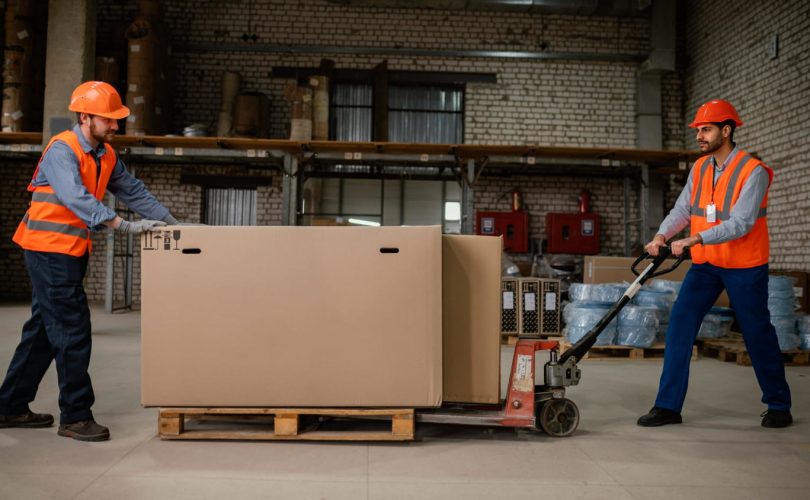If you’ve ever stepped inside a warehouse or manufacturing plant, you know there’s a rhythm to the whole thing — a steady hum of motion. Pallets gliding down lines, boxes shifting from one corner to another, machines talking to each other in smooth automation. That seamless flow? It’s powered by pallet conveyor systems and the know-how of a reliable conveyor systems supplier.
Behind every product that reaches a shelf, there’s an invisible hero — the conveyor network that keeps operations fast, safe, and efficient. Let’s pull back the curtain on how these systems work and why choosing the right supplier makes all the difference.
The Backbone of Material Handling — Pallet Conveyor Systems
Let’s start with the basics. Pallet conveyor systems are designed to move heavy or bulky loads — pallets, containers, crates — effortlessly across a facility. They take on the heavy lifting so your team doesn’t have to, streamlining movement between production lines, storage areas, and dispatch zones.
Unlike simple belt conveyors for small items, pallet systems are built for muscle. Think heavy-duty rollers, chain drives, and modular designs that can handle weights in the hundreds or even thousands of kilos.
The beauty is in the customization — you can tailor your system to match the exact needs of your operation. Options include:
- Roller conveyors: Perfect for pallets or totes that move in a straight line.
- Chain conveyors: Great for heavier or uneven loads that need robust support.
- Turntables & transfers: For redirecting flow without manual handling.
- Automated lifts: Integrating multiple floor levels or storage areas.
Every setup is different, but the goal is the same — continuous, reliable movement with minimal human effort.
Why Pallet Conveyors Are a Game Changer
Installing pallet conveyor systems doesn’t just save time; it completely changes how your facility operates. Here’s how:
- Improved efficiency: Products flow faster and more predictably between stations.
- Reduced labour costs: Less manual handling, fewer forklifts needed.
- Enhanced safety: Workers stay out of high-traffic areas and heavy lifting zones.
- Scalability: Easy to expand or reconfigure as your business grows.
- Integration: Works seamlessly with robotics, pick-and-place systems, and automated storage units.
In short, it’s about creating a smart, connected workspace where material movement becomes part of the process — not an obstacle.
The Role of a Good Conveyor Systems Supplier
Here’s where a trusted conveyor systems supplier comes in. Designing and installing these systems isn’t a one-size-fits-all job. It requires experience, technical insight, and a deep understanding of logistics flow.
A skilled supplier doesn’t just drop off parts — they study your operation first. They’ll assess your floor layout, load weights, and production pace, then design a tailored solution that fits like a glove.
A strong conveyor systems supplier will also:
- Provide end-to-end service — from design to installation and ongoing support.
- Offer modular systems that can grow with your needs.
- Supply automated components like sensors, motors, and control panels.
- Ensure safety compliance and minimal downtime during installation.
- Deliver local maintenance and spare parts — because even the best systems need upkeep.
In short, they become a partner in your operations, not just a vendor.
When Technology Meets Movement
Modern pallet conveyor systems are far more advanced than the old roller lines of the past. Today’s setups feature smart sensors, automated routing, and even AI-powered flow control.
For example, some systems automatically detect when a section of the line is full and reroute pallets elsewhere. Others integrate directly with warehouse management software (WMS), tracking products from entry to dispatch with pinpoint accuracy.
When your conveyor systems supplier understands both engineering and software, the result is a setup that runs like a living organism — self-adjusting, efficient, and dependable.
Choosing the Right Setup for Your Facility
Every warehouse or factory has its own rhythm. The key is to match your pallet conveyor systems to that rhythm — not the other way around. When discussing your needs with a conveyor systems supplier, focus on:
- Space constraints — vertical or horizontal flow options.
- Load variations — the heaviest and lightest items you move.
- Speed requirements — how fast do products need to move?
- Integration — do you plan to connect to robotics or packaging lines?
- Future scalability — can your system grow as your business expands?
A well-designed system will pay for itself through productivity gains and reduced downtime.
Final Thoughts
At the end of the day, pallet conveyor systems are the arteries of modern logistics — keeping products moving, staff safe, and operations smooth. And a great conveyor systems supplier is like the heartbeat behind it all — the partner who keeps things running, evolving, and improving.
Whether you’re automating a small warehouse or designing a large-scale production facility, investing in the right conveyor technology isn’t just about efficiency — it’s about building a system that works with you, not against you.
Because in the world of manufacturing and logistics, movement isn’t just motion — it’s progress.






